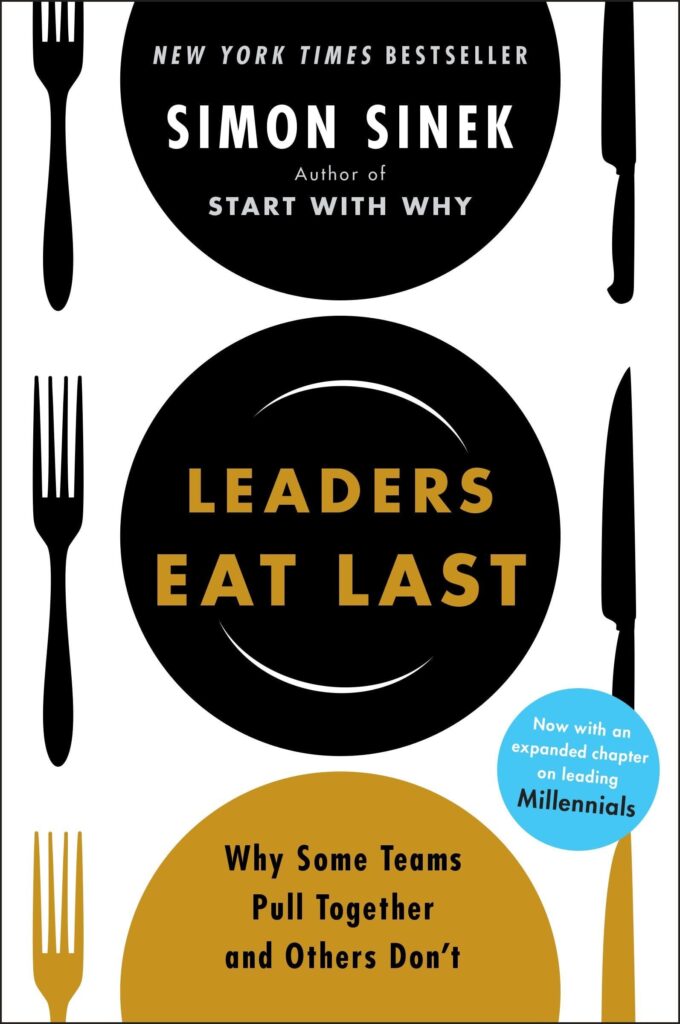Leaders Eat Last
Simon Sinek

The highly anticipated follow-up to Simon Sinek’s global bestseller Start with Why Simon Sinek is an optimist, a visionary thinker, and a leader of the cultural revolution of WHY. His second book is the natural extension of Start with Why, expanding his ideas at the organizational level. Determining a company’s WHY is crucial, but only the beginning. The next step is how do you get people on board with your WHY? How do you inspire deep trust and commitment to the company and one another? He cites the Marine Corps for having found a way to build a culture in which men and women are willing to risk their lives, because they know others would do the same for them. It’s not brainwashing; it’s actually based on the biology of how and when people are naturally at their best. If businesses could adopt this supportive mentality, employees would be more motivated to take bigger risks, because they’d know their colleagues and company would back them up, no matter what. Drawing on powerful and inspiring stories, Sinek shows how to sustain an organization’s WHY while continually adding people to the mix.
Key Summary
The book “Leaders Eat Last” by Simon Sinek delves into the impact of leadership on organizational culture and performance. Sinek argues that the most successful organizations are those in which leaders prioritize the well-being of their employees and create a supportive and safe work environment.
Takeaways
1. Leaders play a critical role in creating a positive organizational culture.
2. Empathy and compassion are key qualities of successful leaders.
3. Leaders must prioritize the safety and well-being of their employees.
4. The most successful organizations prioritize teamwork over individual achievement.
5. Leaders must set a clear and compelling vision for the organization.
6. Creating a sense of belonging and trust among employees leads to increased engagement and productivity.
7. Effective leaders invest in the development of their employees.
8. Leaders must create a positive work environment that encourages creativity and risk-taking.
9. Organizations that prioritize the well-being of their employees are more resilient in times of crisis.
10. The most successful leaders lead by example and model the behavior they wish to see in their employees.